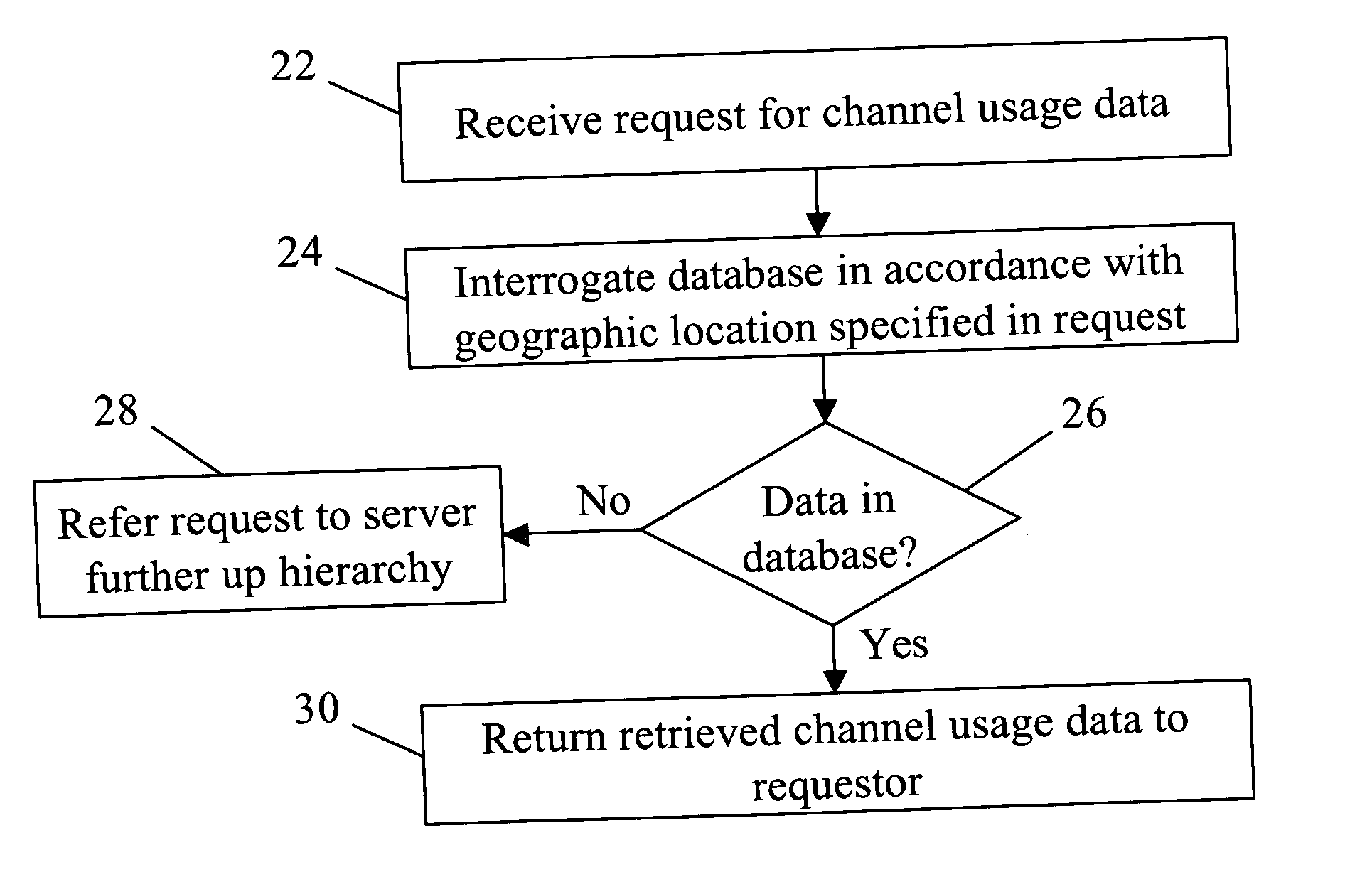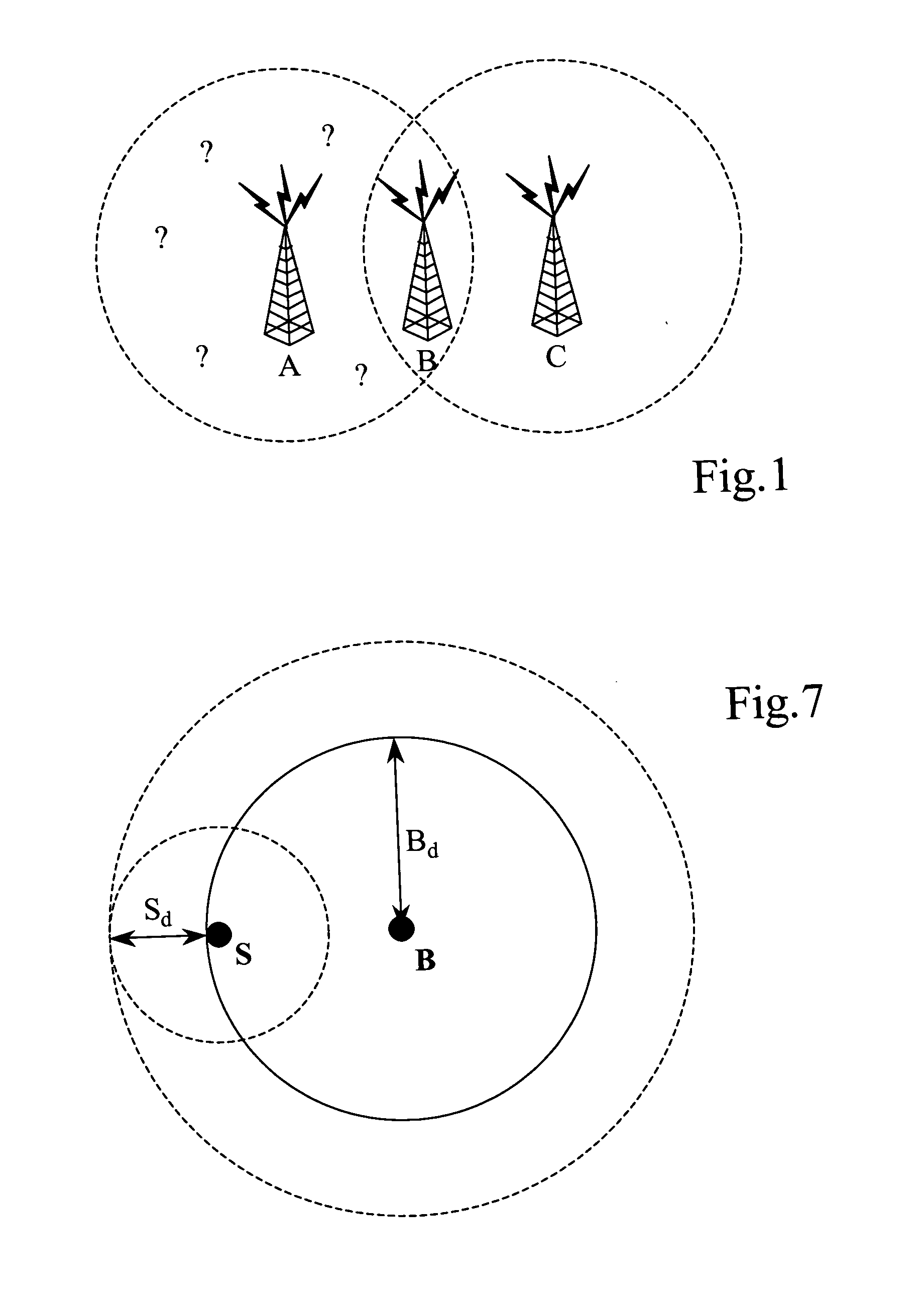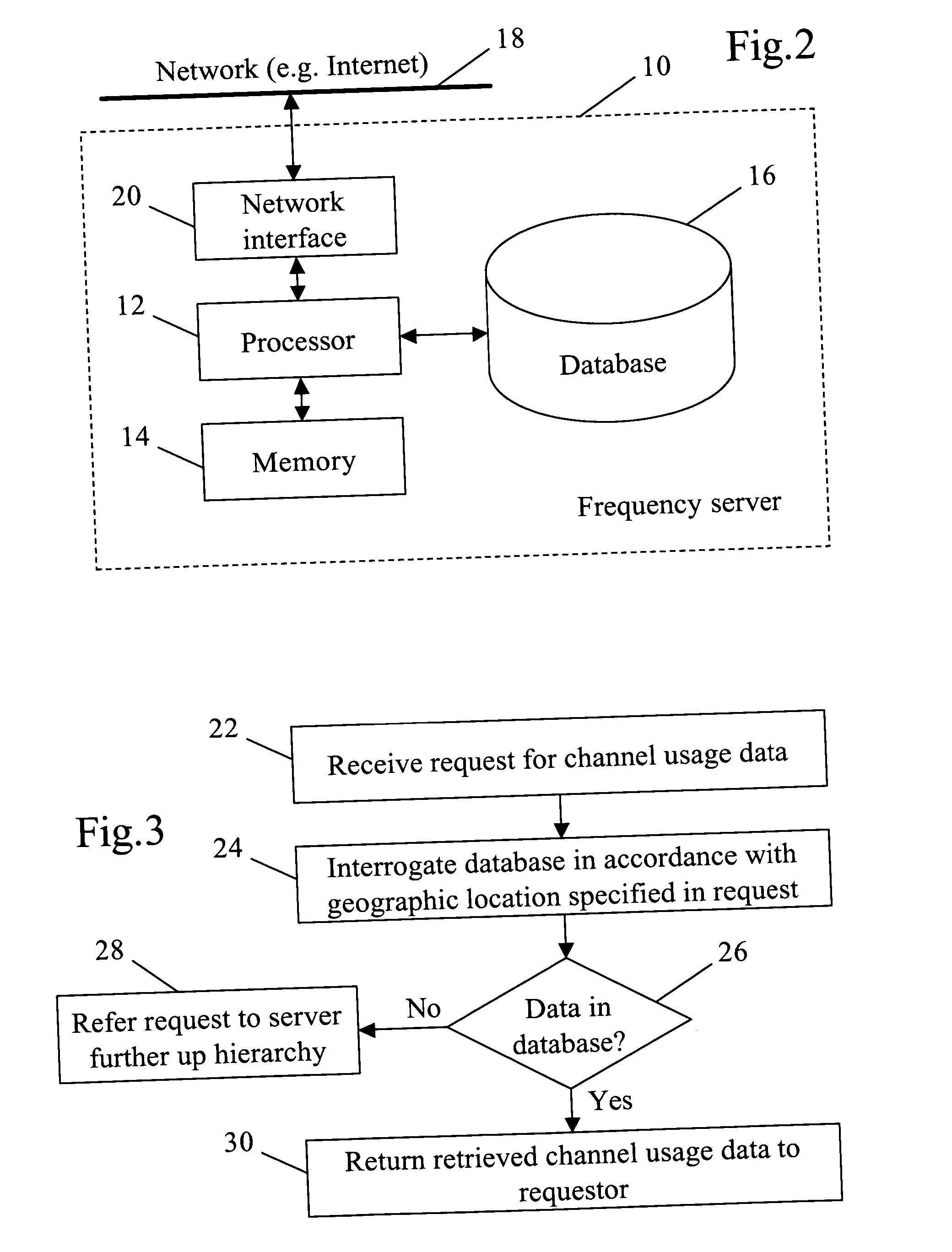Disseminating control information to a wireless communications device
a wireless communication and control information technology, applied in the field of wireless communication information dissemination to a wireless communication device, can solve the problems of limiting the extent to which these solutions can be applied, unfavorable quell this demand, and affecting the commercial advantages of wifi, so as to facilitate use
- Summary
- Abstract
- Description
- Claims
- Application Information
AI Technical Summary
Benefits of technology
Problems solved by technology
Method used
Image
Examples
Embodiment Construction
[0039] The invention provides a framework, in one embodiment, for automatically controlling the frequencies, power levels and modulation schemes used by wireless communications devices such as 802.11 access points, laptop computers and personal digitial assistants. Some aspects of its operation are comparable to the Internet's Domain Name Service (DNS), described in Request for Comments (RFC) 1034 and RFC 1035 of the Internet Engineering Task Force (IETF), and to the Dynamic Host Configuration Protocol (DHCP) described in RFC 2131, but the invention provides services not contemplated by either of those systems and to that end further includes additional functionality.
[0040] Implementation of the invention involves the establishment by regulatory or similar authorities of “frequency servers”, analogous to root domain name servers, providing the following service: given the coordinates of any geographic location within the region for which it holds information, the server determines ...
PUM
 Login to View More
Login to View More Abstract
Description
Claims
Application Information
 Login to View More
Login to View More - R&D
- Intellectual Property
- Life Sciences
- Materials
- Tech Scout
- Unparalleled Data Quality
- Higher Quality Content
- 60% Fewer Hallucinations
Browse by: Latest US Patents, China's latest patents, Technical Efficacy Thesaurus, Application Domain, Technology Topic, Popular Technical Reports.
© 2025 PatSnap. All rights reserved.Legal|Privacy policy|Modern Slavery Act Transparency Statement|Sitemap|About US| Contact US: help@patsnap.com



